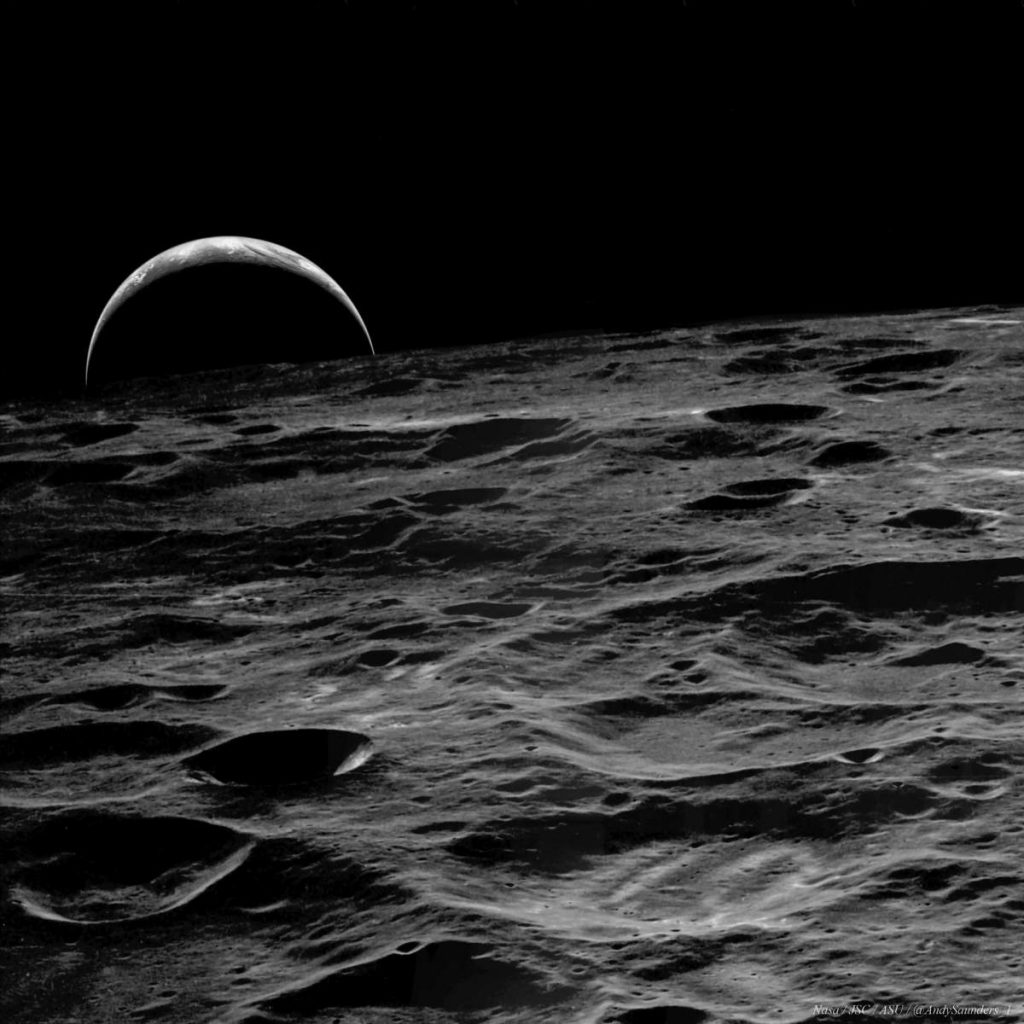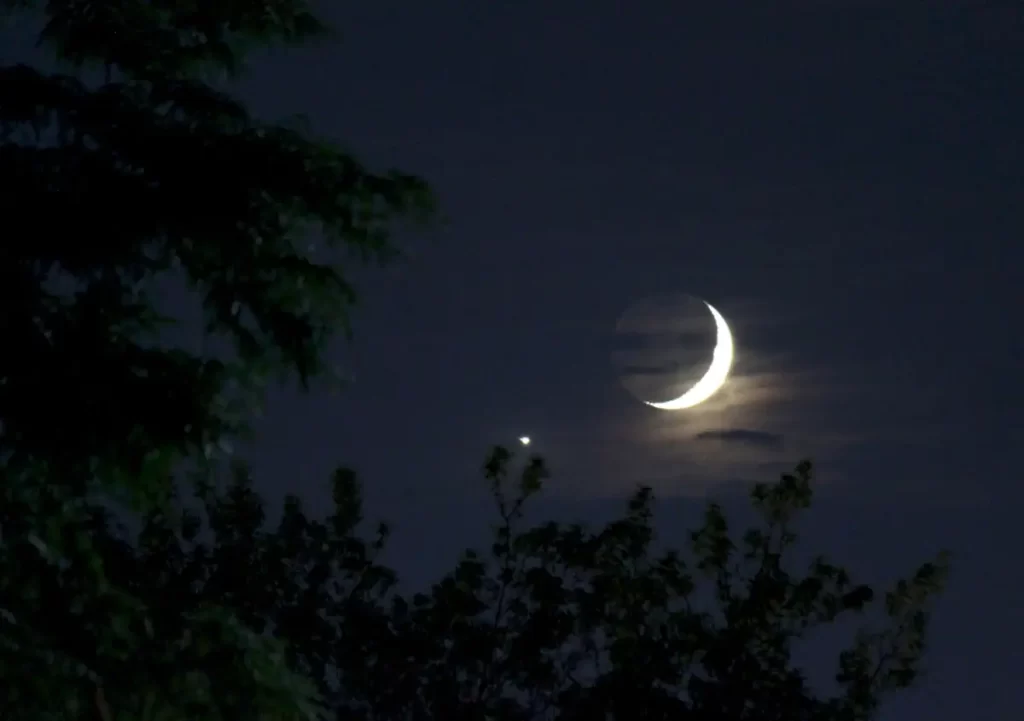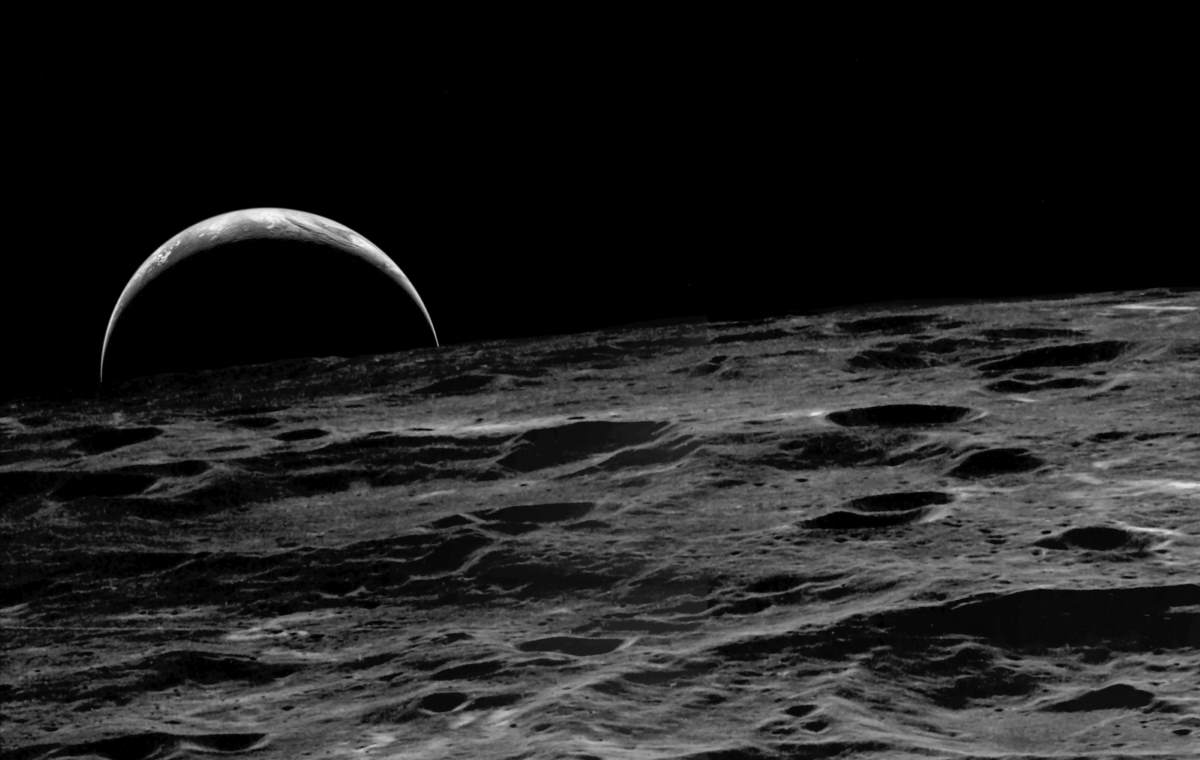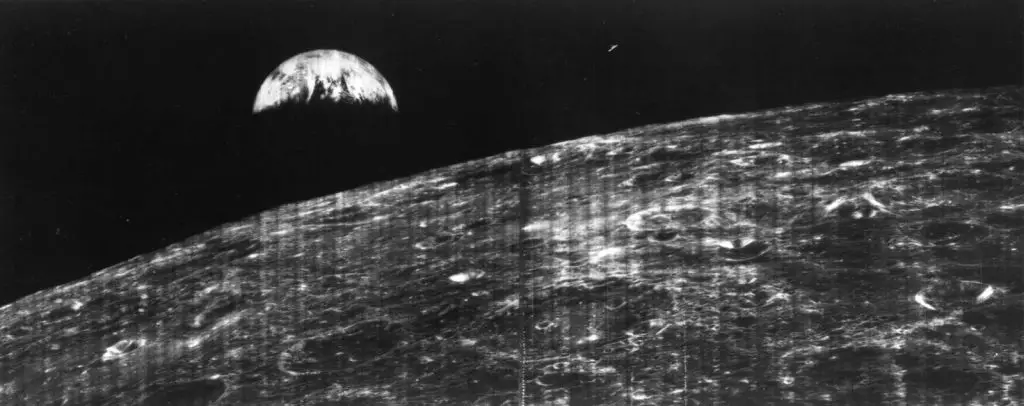Earth’s phases in the Moon’s sky are exactly the opposite of the Moon’s phases in the Earth’s sky. Is there a full moon? The Earth is dark in the Moon’s sky. It’s half-moon? The Earth is also half. Moon is a slim crescent? Earth is almost full.


The big difference is: when we watch the Moon from the Earth, we see the same side of it, the same features. Contrarily, if you watch Earth from the Moon, it hangs fixed in the sky but spins.
The other big difference is that you can see the Moon from anywhere on Earth (at some times of day/night/month), but if you go to the far side of the Moon, you never see the Earth. You get your day and night (each of which lasts half a month), but no Earth in your sky, ever.
There’s a caveat to the above, however. The Earth isn’t precisely fixed in the Moon’s sky if you’re looking up from the near side of the Moon. It wanders a bit, in a little circle, over the course of the month (your “day”), because the Moon always faces the same side to Earth, but it wobbles.
Here’s a video of that moon wobble below, via NASA’s Scientific Visualization Studio.
From Earth, we only see one face of the moon. But it’s not always the exact same face. The moon rotates once on its own axis during each 27-day journey around the Earth.
But, as the moon makes its elliptical orbit, its velocity varies and alters that synchronicity, causing our perspective of the “light side” to appear at slightly different angles throughout any given month. In short, the moon wobbles. At least, it does to our eyes.
A casual glance skyward won’t reveal this, but when a full month of lunar views gets compressed into 12 seconds, as in the visualization below, it’s impossible to miss. This rocking like a ship at sea is called libration, from the Latin for balance scale.
As a result of this wobble, instead of just one side (50%), we actually see about 59 percent of the lunar surface over the course of its orbit around Earth.
The sped-up view also reveals how the apparent size of the moon changes in the sky depending on where it is in its elliptical orbit. Its farthest point, the apogee, and nearest point, perigee, differ by more than 10 percent.
Video: Earth Phases as seen from the Moon
Astronaut on the Moon sees:
- The Moon always keeps the same face towards the Earth (more or less) all of the time, since the position of the Earth in the Moon’s sky is the same with respect to the Lunar horizon of our imaginary astronaut. The Earth neither rises nor sets, but stays fixed in the sky.
- The Moon is obviously rotating about its axis with respect to the stars, as you see the stars sweep past over the course of the Lunar month. If the moon were not rotating about its axis, you would see the same stars all of the time.
- The Earth goes through phases like the Moon, but Earth also obviously rotates about its own axis each day.
- The Lunar sky is always black and filled with stars, even when the Sun is out because it has no atmosphere. (Watch what happens about halfway through the movie when the Earth is at its “New Earth” phase.

Related: What causes the phases of the moon?
- Moon Landings: All-Time List [1966-2025] - February 2, 2025
- What Is Max-Q and Why Is It Important During Rocket Launches? - January 16, 2025
- Top 10 Tallest Rockets Ever Launched [2025 Update] - January 16, 2025

